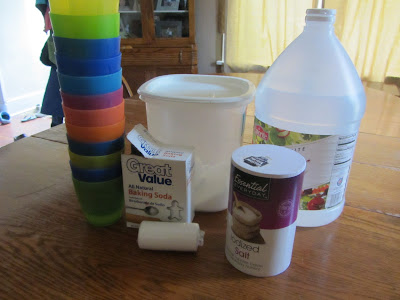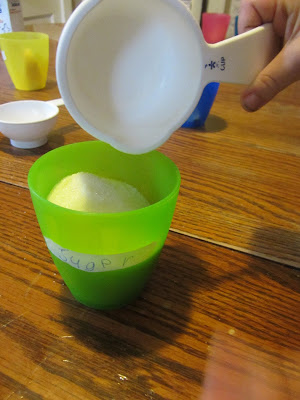(This post contains affiliate links. Please see my disclosure policy for full details.)
As a Christian, I confess that the Egyptian culture is cloaked in evil spiritism and a religious immorality. Neither of which I wish to discuss in detail with my young, impressionable children. But, I am also keenly aware that God loved and LOVES the Egyptian people...as is evidenced by numerous accounts in Scripture of how He chased after their hearts. It was not by accident that great patriarchs of the faith...Abraham, Joseph, Moses, and even Jesus, Himself...spent portions of their lives with these desert peoples. In His mercy, He continued to leave a remnant among them to give Light to their darkened world. It is my prayer that as I teach my children some of the "who", "what", and "where" of Egypt during this unit study, I can also impart a bit of the "why."
I hope you will join me over the coming weeks as I journey back a few thousand years to the times of the pharaohs. I will be sharing some of the resources that we have used and projects we have completed.
We will be using the following core books and filling in with several other living literature titles and videos.
Pharaohs and Pyramids (Usborne Time Traveler)

100 Things You Should Know About Ancient Egypt
 by Jane Walker
by Jane WalkerAfter reading Pyramid
 by David MacAulay, the kids used our wooden blocks to build a replica of the pyramid of Menkaure. This might look like just a big pile of blocks, but the book detailed the step-by-step, 20+ year process. The kids followed the same procedures when erecting each "brick."
by David MacAulay, the kids used our wooden blocks to build a replica of the pyramid of Menkaure. This might look like just a big pile of blocks, but the book detailed the step-by-step, 20+ year process. The kids followed the same procedures when erecting each "brick."Mummified Apples
We also read the fantastically quirky book You Wouldn't Want to Be an Egyptian Mummy! : Disgusting Things You'd Rather Not Know by David Antram and watched the Reading Rainbow episode Mummies Made in Egypt.
by David Antram and watched the Reading Rainbow episode Mummies Made in Egypt.Later, I found this great Mummy Experiment idea and decided that with a few tweaks...ok, a LOT of tweaks, it would be a great way to prove that in using natron (salt), the Egyptians chose the best materials possible when preserving their dead.
What we used:
- 2 apples
- roll of gauze
- 10 plastic cups
- masking tape to make labels
- 4 different natural preservatives (We chose salt, sugar, vinegar, and baking soda.)
Cut both apples into 5 equal slices.
Place one slice into each plastic cup. Reserve 2 slices to be the "control group." Place one of the "control" apples into a cup. Roll the other "control" apple in gauze and place into another cup. These two apples will NOT have a preservative poured onto them.
Pour 1/2 cup of one of the preservatives onto 4 of the apples. Be sure to completely cover each slice. Label the cup with the name of that preservative.
Roll the remaining 4 apple slices in gauze, place into cups, and cover with the same preservatives. Label the cups.
At this point, you should have cups labeled with the following:
apple
apple & gauze
salt
salt & gauze
sugar
sugar & gauze
vinegar
vinegar & gauze
baking soda
baking soda & gauze
Place all cups in a warm, dark, and dry place. (We chose a kitchen cupboard.)
After one week, "unearth" the mummies. Before removing the apples from the "mummy casings", take turns guessing which preservatives you think did the best job mummifying. Dig out/unwrap the apples to reveal the results.
Discuss that the gauze wrappings did not allow the apples to thoroughly dry and therefore created a greenhouse for bacteria and mold. This is why the Egyptians dried their dead before wrapping them.
Optional: Compare the salt-only apple with a dehydrated apple. The salt apple looks more "preserved" than any of the others, including the dehydrated (edible) apple.
Document your findings with a simple notebook entry.
More Ancient Egypt Ideas to Explore
Mummified Apple Experiment
Taamia Falafal (Meatless Pitas)
Making Papyrus
Make a Cartouche
Map of Egypt














I have this very experiment pinned to do when we're ready for it (soon), but I hadn't actually seen anyone do it. I'm thankful for this post with all of the pics so that I can be better prepared! This looks like so much fun, and I know my boys will love it!
ReplyDeletehttp://ajoyfulmess.blogspot.com
It was tons of fun. Hope you enjoy it someday as much as we did.
DeleteThis is wonderful what a fun experiment to do and can't wait to do it with my kids when we get to that point
ReplyDeleteMummified apples?! It doesn't get much cooler than that. Another fabulous activity. Pinning this!!
ReplyDeleteHi Jamie! This sounds like so much fun! We're studying Ancient Egypt (for the third year in a row.) We really enjoy learning about ancient civilization. And despite the discussion of many gods and such, I find it a great opportunity to discuss idolatry and false gods with my children. And they are in know way confused as to whether or not the many Egyptian gods were real or not. Thanks for sharing this ultra cool experiment! We are definitely going to add this into our studies!
ReplyDeleteI completely agree, Amber. It does present a great opportunity to speak truth about idol worship. I do that with much of it and skip over some that is just too dark...like child sacrifice. I love creating a "green house" of learning where I can introduce these difficult topics and steer the conversation to the truth. Just out of curiosity, do you use a particular history curriculum or do you just create your own unit studies. We use Truth Quest guides for title suggestions.
DeleteI love the mummified apple. That's always such a fun study!
ReplyDeletePinning :) Just in time, since I am preparing next years books and curriculum.
ReplyDeleteThanks for the ideas.
Dear Jamie,
ReplyDeleteA HUGE BIG THANK YOU for having this awesome experiment on your blog! WOW we loved doing it and your other ideas about Ancient Egypt are tops also!!! WHat a blessing to be able to share and learn from each other!! Thanks again lovely, really appreciate it!!
Smiles Sharnee :)